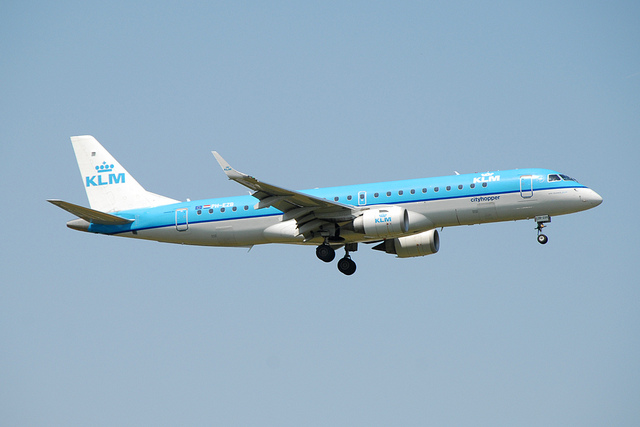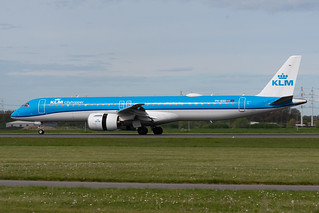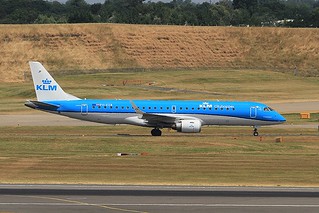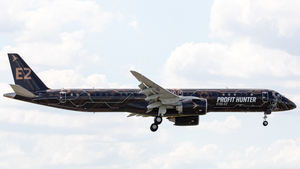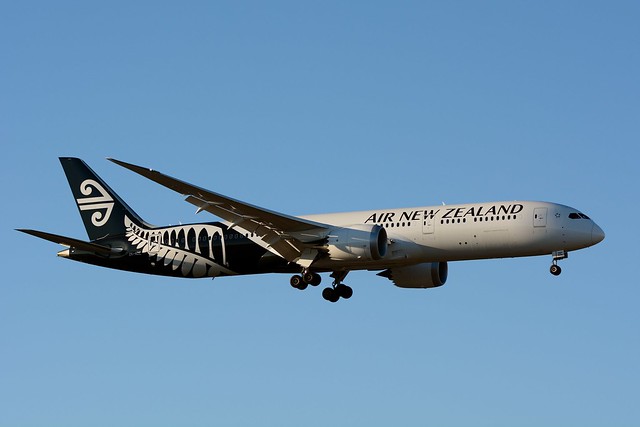KLM Cityhopper E190 at Amsterdam on Feb 28th 2016, runway incursion by tow truck, balked landing
Last Update: December 29, 2018 / 21:17:30 GMT/Zulu time
Incident Facts
Date of incident
Feb 28, 2016
Classification
Incident
Cause
Runway incursion
Airline
KLM Cityhopper
Flight number
KL-1884
Departure
Nuremberg, Germany
Destination
Amsterdam, Netherlands
Aircraft Registration
PH-EXF
Aircraft Type
Embraer ERJ-190
ICAO Type Designator
E190
On Mar 2nd 2016 the Dutch Onderzoeksraad Voor Veiligheid/Safety Board (DSB) announced that an investigation has been opened into the occurrence. A tow truck towing an aircraft was crossing the active runway and had been cleared to do so, while an aircraft was on final approach cleared to land. Tower instructed the landing aircraft to go around.
On Oct 17th 2018 the DSB released their final short summary report without a formal conclusion (editorial note: the link was updated on Dec 29th 2018 due to reorganisation of the DSB website, the PDF remained unchanged). The DSB however wrote:
The crossing of active runway 18L-36R via intersection E3 by a tug combination
Towing crews are not informed of runway use prior to a towing movement. This means they cannot anticipate when they should contact LVNL and when contact with Apron Control is sufficient. Not having been transferred and having received clearance from Apron Control gave the tug driver the impression that the runway was not active.
Because the tug combination had to make a turn just before crossing the runway and drove onto the runway at a ‘coasting’ speed, there was little time to properly assess the situation, carefully check for other (aircraft) traffic and pay attention to the warning signals (runway guard lights and stop bar). This reduced the safety margins.
The stop bar may have been illuminated at an intensity of 10% (night setting). When combined with the clear weather and sunshine, this may have created the illusion that the stop bar was not illuminated.
In a training situation, the tug crew was unclear about the distribution of roles and responsibilities. The KLM Ground Services documentation does not set this out either.
The avoidance of a collision between the approaching aircraft and the tug combination
The situational awareness of the runway controller, assistant 2 and the aircraft crew was what prevented a collision. The Runway Incursion Alerting System Schiphol worked, and a warning signal was issued in good time.
As a result of separate locations in the air traffic control towers and the use of different frequencies, towing processes for which LVNL is responsible cannot be followed by the air traffic controllers. Nor were they able to intervene to prevent the runway incursion in this incident.
Just Culture
The AOM’s decision to hold the tug driver solely responsible for the runway incursion immediately after the incident, to classify the incident as a contravention and to revoke his Schiphol pass was not even-handed.
The decision to hold the tug driver solely responsible was not in line with the term ‘just culture’ and could have effects on future safety investigations and safety management by AAS. Reporting unsafe situations and being able to speak freely about one’s own actions and errors during an incident is one of the most important conditions that a ‘just culture’ must satisfy.
The DSB reported that the tug driver was in contact with apron control, apron control erroneously cleared the tug to cross runway 36R, although the runway was active and was under sole jurisdiction by tower (LVNL), an aircraft was on short final.
The DSB described the following events:
The tug driver and his instructor, who was sitting in the aircraft, did not notice the illuminated warning lights, orange flashing runway guard lights and red stop bar lights, at the intersection. Neither of them realised that the runway was currently being used by landing aircraft. The tug combination drove onto the landing runway to cross it. Air traffic control ordered an aircraft that was approaching for a landing on the runway to abort its approach and to initiate a go-around.
After the incident, the instructor and the tug driver had a discussion with the Airside Operations Manager (AOM). The AOM considered that the tug driver had caused the runway incursion and therefore temporarily revoked his Schiphol Pass.
The DSB analysed:
The apron controller was able to grant an incorrect clearance due to a combination of factors. Because he was completing administrative work, he was not focussed on his primary task of supervising the towing traffic. In addition, the runway status (active/not active) changes regularly, and the failure of the apron controller to check the status of the runways on the runway panel contributed to this incorrect clearance.
Because the status of the runways is shown on a separate runway panel and is not integrated into the primary radar screen, the apron controller was unable to see at a glance that the runway for which he had granted clearance was an active runway. The runway panel is located diagonally behind the radar screen, and not within the apron controller’s direct line of sight.
Aircraft Registration Data
Incident Facts
Date of incident
Feb 28, 2016
Classification
Incident
Cause
Runway incursion
Airline
KLM Cityhopper
Flight number
KL-1884
Departure
Nuremberg, Germany
Destination
Amsterdam, Netherlands
Aircraft Registration
PH-EXF
Aircraft Type
Embraer ERJ-190
ICAO Type Designator
E190
This article is published under license from Avherald.com. © of text by Avherald.com.
Article source
You can read 2 more free articles without a subscription.
Subscribe now and continue reading without any limits!
Read unlimited articles and receive our daily update briefing. Gain better insights into what is happening in commercial aviation safety.
Send tip
Support AeroInside by sending a small tip amount.
Related articles
KLM Cityhopper E175 near Amsterdam on Apr 15th 2024, lightning strike
A KLM Cityhopper Embraer ERJ-175, registration PH-EXJ performing flight KL-1057 from Amsterdam (Netherlands) to Norwich,EN (UK), was climbing out of…
KLM Cityhopper E190 at Amsterdam on Apr 8th 2024, pressurization problem
A KLM Cityhopper Embraer ERJ-190, registration PH-EZB performing flight KL-1945 from Amsterdam (Netherlands) to Basel/Mulhouse (Switzerland/France),…
KLM Cityhopper E195 at Edinburgh on Jan 16th 2024, electrical problems
A KLM Cityhopper Embraer ERJ-195, registration PH-NXO performing flight KL-1279 from Amsterdam (Netherlands) to Edinburgh,SC (UK), was on approach to…
KLM Cityhopper E190 at Amsterdam on Dec 29th 2023, lightning strike
A KLM Cityhopper Embraer ERJ-190, registration PH-EZR performing flight KL-1357 from Amsterdam (Netherlands) to Prague (Czech Republic), was climbing…
KLM Cityhopper E295 at Berlin on Sep 12th 2021, takeoff from 1320 meters past prepared line up
A KLM Cityhopper Embraer ERJ-195-E2, registration PH-NXD performing flight KL-1830 from Berlin Brandenburg (Germany) to Amsterdam (Netherlands) with…
Newest articles
Engineering the future: The intersection of technology and aviation education
Can you imagine a world without technology? What would have started as something that made life easier has grown to become something we can't live…
ANZ B789 over Timor Sea on Apr 16th 2024, turbulence injures passenger
An ANZ Air New Zealand Boeing 787-9, registration ZK-NZC performing flight NZ-65 from Denpasar (Indonesia) to Auckland (New Zealand), had just…
Subscribe today
Are you researching aviation incidents? Get access to AeroInside Insights, unlimited read access and receive the daily newsletter.
Pick your plan and subscribePartner

A new way to document and demonstrate airworthiness compliance and aircraft value. Find out more.

ELITE Simulation Solutions is a leading global provider of Flight Simulation Training Devices, IFR training software as well as flight controls and related services. Find out more.

Your regulation partner, specialists in aviation safety and compliance; providing training, auditing, and consultancy services. Find out more.
AeroInside Blog
Popular aircraft
Airbus A320Boeing 737-800
Boeing 737-800 MAX
Popular airlines
American AirlinesUnited
Delta
Air Canada
Lufthansa
British Airways


